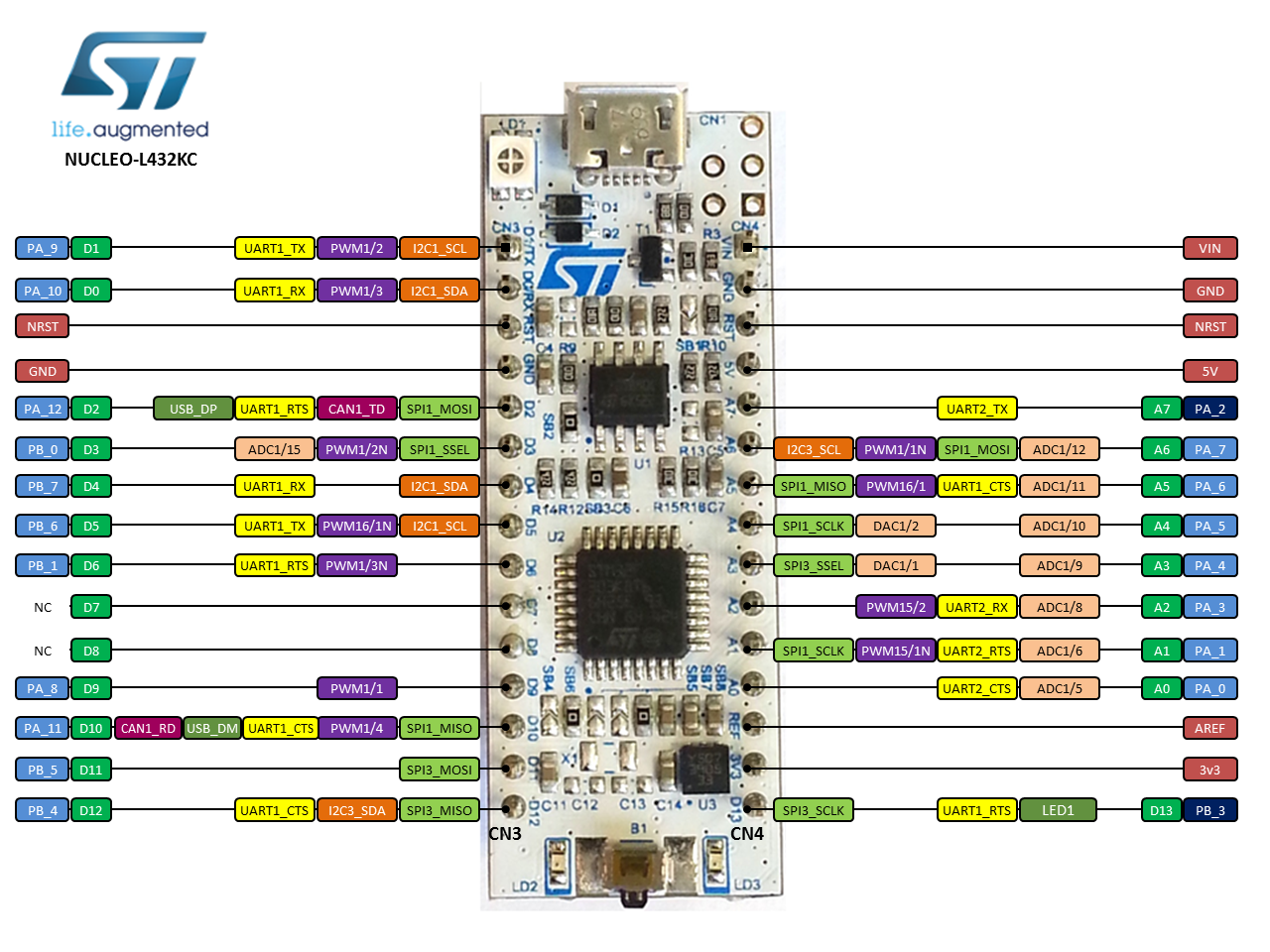

(The STM32 blue pill diagram is fully labeled). To an extent, it is pretty low in cost and easy-to-use relatively.
#STM NUCLEO SOFTWARE#
To aid you in getting started there is a comprehensive software HAL library, together with various packaged software examples, as well as direct access to the ARM mbed online at. The STM32 pinout is a Nucleo board from STMicroelectronics. The inclusion of the ST-LINK/V2-1 debugger and programmer means that the boards do not require external probing. They also have the standard Arduino connectors which allows you to use the wide range of modules that have been developed. You use the online mbed compiler and the wide range of APIs that are part of that community.

Let’s take a closer look at the STM32F401, as shown in Figure 2. Each board differs for performances, power consumption, clock frequency and flash memory capacity of the STM32 microcontroller.
#STM NUCLEO SERIES#
The boards feature Arduino Uno V3 connectivity support, and ST morpho headers extend the functionality of the Nucleo open development platform via a wide choice of specialised shields. The Nucleo boards are designed to help engineers design and prototype ideas very quickly. The whole series of NUCLEO boards is equipped with a STM32 microcontroller based on ARM Cortex-M, adopting a 32-bit RISC architecture. The range of boards let you choose a combination of performance, power consumption and features that suit your development requirements. Built on STMicroelectronics STM32H743ZI MCU, this STM32 Nucleo-144 board provides an affordable and flexible way to try out new concepts and build. What makes it special?Ī single board that has an ST STM32 processor, ST programmer, Breadboard, 5V power, and 3V3 power all in one sounds pretty special to me.The STM Nucleo development boards from ST are highly affordable and flexible Arduino compatible development boards that allow you to try out new ideas, create prototypes and refine designs using any STM32 microcontroller. For example, on Nucleo-64 and Nucleo-144 the User Button is always connected to PC13, on many STM32 Discovery kit, it is connected to PA0. We have just to pay attention to the schematic in order to figure out where the button is connected. I love these boards and the nucleo ecosystem, but I really wanted to have a single solid piece of hardware that I could carry around with me and transport easily without having worry about something being disconnected. Up to now, every official STM32 development kit (except Nucleo-32) is equipped with a button. I didn't much like having to have a separate breadboard flopping around on the couch next to me. STM32 Nucleo is affordable board with extended application available. Honestly I like to work on these little boards while I'm relaxing on the couch. NUCLEO-L152RE STM32 Nucleo development board with STM32L152RET6 MCU supports Arduino.

Just to be clear this does not include the ST Nucleo Board. The STM Nucleo is a more affordable and flexible development platform when compared to Arduino and even offers better stats. This can be a 9V battery with an adapter, or a wall wart. Figure 1: STM NUCLEO Range The whole series of NUCLEO boards is equipped with a STM32 microcontroller based on ARM Cortex-M, adopting a 32-bit RISC architecture. The 5V and 3V3 power rails are powered by the barrel jack and needs to be powered by a power source that supplies higher than (or equal to) 6V.

The rest of the pins are passed directly from the board to the headers around the breadboard to allow for easy prototyping. The only pins that are connected are the ground, which I verified are the same across the nucleo family. This is an expansion board for Any ST/STM32 nucleo-64 board.


 0 kommentar(er)
0 kommentar(er)
